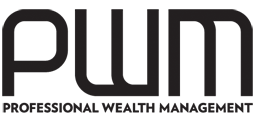If there is one client segment which has recently popularised the use of commodities, with gold the particular favourite, it is private wealth management.
The role of natural resources in client portfolios has been a topic of hot debate for years, with many investors, particularly in Asia, using them as an alternative to hedge funds.
Commodity returns should broadly track global nominal growth, says Dan Briggs, chief investment officer at Fleming Family & Partners, meaning rising prices would indicate a forthcoming economic upswing. Traders must take account of issues such as periodic supply constraints, freak weather and food demand, which can cause major price swings and form part of the attraction of buying in and out of this asset class. The major plus point is that commodities are real assets, not paper certificates, and their prices do not generally move in tandem with mainstream investments.
Some banks, expecting a slow but sustained economic recovery, are tentatively positioning clients for pick-up in commodity prices, although at this stage they prefer guaranteed investments rather than high-octane funds.
Asset selectors such as Marc Lansonneur, Singapore-based regional head of investment for Asia Pacific at Société Genérale Private Banking, believe recovery will be powered by commodities such as oil, expected to surge above its current $90 (€70) range. “Oil has a limited downside,” says Mr Lansonneur, expecting healthy demand.
“Even if we see negative news, I don’t expect oil to dip below $75,” he adds, with the market best played through range-bound structured products.
He is slightly more cautious on copper and aluminium prices, both clearly correlated to Chinese export numbers. Expecting the Chinese economy to grow at 7.5 per cent following the leadership change, any price changes “won’t be exceptional”, he predicts.
But those private investors who think they have found a more solid, easier to understand version of hedge funds are making a big mistake, says Mr Briggs at FF&P. “Commodities and hedge funds have completely different sensitivities and attractions,” he insists. “It is not a case of either/or,” in a private portfolio.
While promoters of hedge funds typically promise non-market related absolute returns, commodity investing can cover direct holdings, trend following and commodity equities. Each of these brings different portfolio characteristics. So while the asset management arm of FF&P has reduced its holdings of hedge funds, following indifferent returns, it is currently a huge fan of buying into the commodities story, particularly through exchange traded fund (ETF) investments and indirect company investing via shares.
THE SAFETY OF GOLD
Like many wealth houses, FF&P advocates gold as an independent store of value, in a world of vanishing safe havens. “Unlike nominal government bonds, the conventional low-risk capital preservation asset of choice, gold is outside the scope of governments and central banks to manipulate,” adds Mr Briggs.
Investing in nominal government-backed assets is a hazardous activity today, he believes, with paper driven to historically high valuations by central bank liquidity programmes and institutional allocations fuelled by actuarial advice. Bonds have been pushed into bubble territory partly because they were the only asset providing positive returns during the 2008-9 crisis, he says. Commodities, on the other hand, provide attractive low correlation characteristics, largely irrespective of the economic cycle.
The recent healthy fortunes of the gold price have been inextricably linked to quantitative easing, believes Mr Briggs. For FF&P, gold’s key role in client portfolios should be as a “real” capital preservation hedge rather than a source of absolute capital growth.
However, gold is still expected to continue to appreciate by the likes of Mr Briggs. “We do not regard price forecasts in the market of $2-2,500 within the next three years as inconceivable, given the current macro backdrop.”
The most enthusiastic users of gold in private client portfolios have been the Swiss banks, with typical players such as Union Bancaire Privée recommending weightings of 10 to 15 per cent in balanced portfolios.
The Geneva bank expects gold to play an “important role” for the next three to five years at least. “The price may occasionally go down a bit for a couple of weeks, but as an asset class, globally, gold is the ultimate in protection against inflation,” suggests UBP’s head of private banking Michel Longhini.
To keep gold in the news, and to ensure ongoing analysis of gold demand figures, some of the world’s largest gold mining companies finance the World Gold Council to do their talking. WGC investment director Marcus Grubb has been successful in befriending the private wealth sector, where allocations of 5 to 15 per cent are the norm, compared to minimal exposure in the institutional space.








